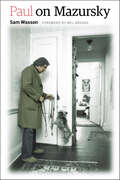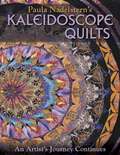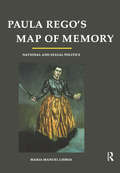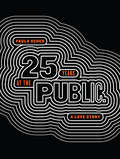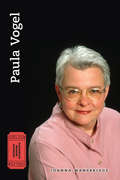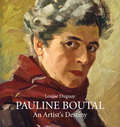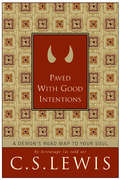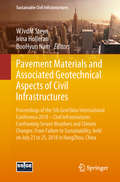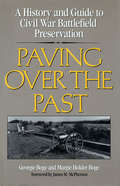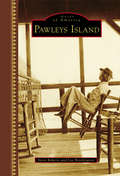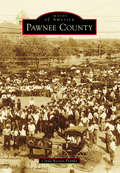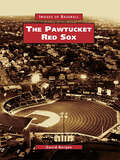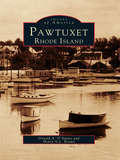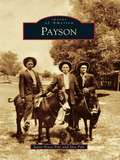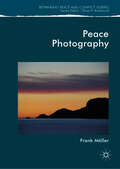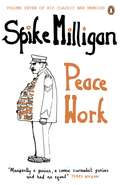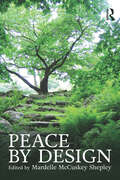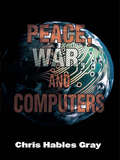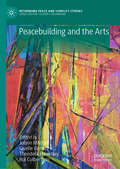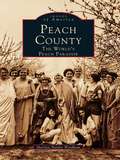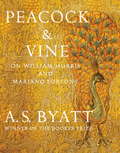- Table View
- List View
Paul on Mazursky (Wesleyan Film)
by Sam WassonPaul Mazursky's nearly twenty films as writer/director represent Hollywood's most sustained comic expression of the 1970s and 1980s. But they have not been given their due, perhaps because Mazursky's films—both sincere and ridiculous, realistic and romantic—are pure emotion. This makes films like Bob & Carol & Ted & Alice, An Unmarried Woman, and Enemies, A Love Story difficult to classify, but that's what makes a human comedy human. In the first ever book-length examination of one of America's most important and least appreciated filmmakers, Sam Wasson sits down with Mazursky himself to talk about his movies and how he makes them. Going over Mazursky's oeuvre one film at a time, interviewer and interviewee delve into the director's life in and out of Hollywood, laughing, talking, and above all else, feeling—like Mazursky's people always do. The book includes a filmography and never-before-seen photos.
Paula Deen's Savannah Style
by Paula DeenWith its lush gardens, stately town houses, and sprawling plantations, Savannah is the epitome of old Southern style, and who better to give you the grand tour than Paula Deen, the city’s most famous resident and anointed Queen of Southern Cuisine? In this gorgeous, richly illustrated book, Paula Deen shares a full year of Southern living. Whether it’s time to put out your best china and make a real fuss, or you’re just gathering for some sweet tea on the porch at dusk, Savannah style is about making folks feel welcome in your home. With the help of decorator and stylist Brandon Branch, you’ll learn how to bring a bit of Southern charm into homes from Minnesota to Mississippi. For each season, there are tips on decorating and entertaining. In the spring, you’ll learn how to make the most of your outdoor spaces, spruce up your porch, and make your garden inviting. In the summer, things get more casual with a dock party. Sleeping spaces, including, of course, the sleeping porch, are the focal point of this chapter. In the fall, cooler weather brings a return to more formal entertaining in the dining room, and in the winter, attention returns to the hearth, as Paula and her neighbors put out their best silver and show you how they celebrate the holidays. Paula loves getting a peek at her neighbors’ parlors, so she’s included photographs of some of Savannah’s grandest homes. From the vast grounds of Lebanon Plantation to the whimsically restored cottages on Tybee Island, you’ll see the unique blend of old-world elegance and laid-back hospitality that charmed Paula the moment she arrived from Albany, Georgia, with nothing but two hundred dollars and a pair of mouths to feed. And she isn’t shy about giving you a window into her own world, either. From her farmhouse kitchen to her luxurious powder room, you’ll see how Paula lives when she’s not in front of the camera. Packed with advice and nostalgia, Paula Deen’s Savannah Style makes it easy to bring gracious Southern living to homes north and south of the Mason-Dixon Line.
Paula Nadelsterns Kaleidoscope Quilts: An Artist’s Journey Continues
by Paula NadelsternCelebrate Kaleidoscope Quilts With the Master Kaleidoscope Artist • Career retrospective of Paula Nadelstern's awe-inspiring quilts is packed with photos, design insights, and tips for making your own kaleidoscope quilts • Huge gallery with photos and in-depth, behind-the-scenes commentary on 19 quilts • Chapters with detailed explanations of Paula's design strategies and construction methods The astonishing quilts that spring from Paula Nadelstern's passion for kaleidoscopes will change your view of what a quilt can be. This book highlights Paula's life work and shows how you can use her techniques to create your own unique fabric art.
Paula Rego's Map of Memory: National and Sexual Politics
by Maria Manuel LisboaThis title was first published in 2003. The artist Paula Rego was born in Portugal but has lived in Britain since 1951. In this well-illustrated book, Maria Manuel Lisboa explores the background behind Rego's decision to leave the land of her birth and, in doing so, provides fascinating insights into Rego's persistent portrayal of uneasy and predatory relations between men and women. Looking back over the national, religious and sexual politics of Portugal during Rego's childhood under the shadow of the Salazar dictatorship and subsequently, Lisboa locates the origins of the artist's preoccupation with power and powerlessness, violence and abuse within the political and ideological status quo of Portugal, past and present. The author's clear and thoughtful analysis offers an ambitious contribution to the study of patriarchy, Catholicism and Fascism and their expression in the work of this artist.
Paula Scher: Twenty-Five Years at the Public: A Love Story
by Paula ScherA larger-than-life figure in the design community with a client list to match, Paula Scher turned her first major project as a partner at Pentagram into a formative twenty-five-year relationship with the Public Theater in New York. This behind-the-scenes account of the relationship between Scher and "the Public," as it's affectionately known, chronicles over two decades of brand and identity development and an evolving creative process in a unique "autobiography of graphic design."
Paula Vogel
by Joanna MansbridgePaula Vogel's plays, including the Pulitzer-prizewinning How I Learned to Drive, initiate a conversation with contemporary culture, staging vexed issues like domestic violence, pornography, and AIDS. She does not write "about" these concerns, but instead examines how they have become framed as "issues"-as sensationalized topics-focusing on the histories and discourses that have defined them and the bodies that bear their meanings. Mobilizing campy humor, keen insight, and nonlinear structure, her plays defamiliarize the identities and issues that have been fixed as "just the way things are." Vogel crafts collage-like playworlds that are comprised of fragments of history and culture, and that are simultaneously inclusive and alienating, familiar and strange, funny and disturbing. At the center of these playworlds are female characters negotiating with the images and discourses that circumscribe their lives and bodies. In this, the first book-length study of Vogel and her work, Joanna Mansbridge explores how Vogel's plays speak back to the canon, responding to and rewriting works by William Shakespeare, Edward Albee, Sam Shepard, and David Mamet, rearranging their plots, revising their conflicts, and recasting their dramatis personae. The book examines the theories shaping the playwright and her plays, the production and reception of her work, and the aesthetic structure of each play, grounding the work in cultural materialist, feminist and queer theory, and theater and performance studies scholarship.
Pauline Boutal: An Artist's Destiny, 1894-1992
by Louise Duguay S. E. StewartIn the first part of the twentieth century few women in western Canada had careers as artists—Pauline Boutal had three: 23 years as a fashion illustrator for the Eaton’s catalogue for the graphic design company, Brigden’s of Winnipeg, 27 years as the Artistic Director at the Cercle Molière Theatre and 70 years as a visual artist. Born in Brittany in 1894, Boutal painted in a traditional style and trained at the Winnipeg School of Art, the Cape Cod School of Art, and at l'Academie de la Grande Chaumiere in Paris, France. She left an important legacy of portraits, landscapes, still lifes, and illustrations as well as theatre sets and costume designs. This English translation of Louise Duguay’s award-winning "Pauline Boutal: Destin d'artiste 1894–1992" shares the story of an important artist who lived an exceptional life. Today a great number of Boutal’s works can be found in major private and corporate collections across Canada. For her contribution to the French culture and theatre in Canada, Boutal was awarded numerous prestigious prizes, including the Order of Canada. In addition to thousands of sketches, illustrations, and paintings, Boutal also left a rich legacy of letters, speeches and interviews at the Centre du Patrimoine Canadien. Drawing on these sources, Louise Duguay has created a work that honours the best of biography and autobiography.
Pause
by Emily Carr Ian M. ThomWhile studying art in London, Emily Carr seriously undermined her health and was sent to a sanatorium for a complete rest cure. Bridling at the hospital's rules, which prohibited excitement of any kind, the always rebellious Carr proceeded to make friends, raise birds, and cause trouble. In words and enchanting sketches, Carr presents a funny, poignant account of her 18-month convalescence.
Paved with Good Intentions
by C. S. LewisTemptation and Deception Made Easy The demon Wormwood first became famous through his correspondence with his uncle Screwtape, published in The Screwtape Letters. We are now privileged to peruse his field notebook from that demonic training session, complete with scribbles, notes, and excerpts from his uncle's letters. Wormwood's instructions, mission statements, and maxims for special occasions create a "best of Screwtape" that offers witty and cutting strategies for how best to corrupt a brand new Christian and steal him from the "Enemy" -- God. If the best defense is to know your opponent's game book, this is a must read for all those who want to retain their souls.
Pavement Materials and Associated Geotechnical Aspects of Civil Infrastructures: Proceedings of the 5th GeoChina International Conference 2018 – Civil Infrastructures Confronting Severe Weathers and Climate Changes: From Failure to Sustainability, held on July 23 to 25, 2018 in HangZhou, China (Sustainable Civil Infrastructures)
by WJvdM Steyn Irina Holleran BooHyun NamThis book contains latest research studies regarding issues related to civil infrastructure such as pavement layers and material properties. It contains research data and conclusions that should lead to more resilient infrastructure design, maintenance and management. Civil engineering researchers and practitioners will gain valuable information from this material. Papers were selected from the 5th GeoChina International Conference on Civil Infrastructures Confronting Severe Weathers and Climate Changes: From Failure to Sustainability, held on July 23-25, 2018 in HangZhou, China.
Paving Over the Past: A History And Guide To Civil War Battlefield Preservation
by James M. Mcpherson Margie Boge Georgie Boge GeraghtyIn this exhaustively researched book, Georgie Boge and Margie Boge analyze the issues and controversies surrounding the preservation of Civil War battlefield sites, and offer a pragmatic development program designed to accommodate the needs of both historic preservation and economic growth. Not only do they provide a framework for developing actual preservation strategies, they show how important historical, cultural, and natural resources can be preserved with economic benefit to the community.After exploring the special importance of battlefield sites to the nation, the Boges discuss existing policies for preservation. Through extensive case studies, they demonstrate the inadequacies of current mechanisms, and present a detailed policy program that could effectively protect the remaining land, and also help save other historically or culturally significant sites.
Pawfect Love: Life Is Best with a Love Like Yours (Perfect for Animal Lovers)
by ZondervanPawfect Love combines adorable photos of unlikely animal pairs with affectionate quotes to share with the one you love--differences and all! With over 150 pages of fur-cuteness, grown-ups and kids will love this coffee table book. From a bunny snuggling with a duck to a kitty playing with a deer to a puppy having fun with a hamster, these furry pairs remind us that not being exactly the same is part of what makes a relationship great.Spotlighting topics such as commitment, happiness, and togetherness, the quotes are by an array of beloved writers, such as:C.S. LewisKatharine HepburnDonald MillerCharles DickensCharlotte BronteOscar Wildeand many more Delightful photos from the mother-son photography team Warren Photographic humorously communicate the lighter side of your heart's affection in this fun and unique gift book. Pawfect Love is a fun gift for:Couples on their engagement, wedding day, or anniversaryA significant other on Valentine's Day, a birthday, or any ordinary dayPeople who love animals and animal photography One of the best things about love is enjoying each other's uniqueness. Our animal friends have discovered this already! So here's to our differences! We wouldn't want it any other way--paws down.
Pawleys Island: A Century Of History And Photographs (Images of America)
by Steve Roberts Lee BrockingtonThe history of Pawleys Island can be summed up in four words: rice, sea, golf, and hammocks. The rivers threading through coastal South Carolina created an ideal environment for cultivating rice, and by the mid-18th century, vast plantations were producing profitable crops and wealthy landowners. But those plantations also produced malaria-carrying mosquitoes, so the landowners sent their families to the seashore for the summer and built the first houses on Pawleys Island starting in 1822. The end of slavery doomed the rice culture, and the old plantations were sold to rich Northerners for hunting and fishing retreats. During the Depression, the Lachicotte family started making and selling distinctive rope hammocks, the perfect symbol for the island's slow, simple lifestyle. By the 1960s, many of the old plantations were turned into golf courses, reviving the economy. But the beating heart of Pawleys Island remains the rhythm of the sea and what one early visitor called "the only beach in the world."
Pawnee County
by Clyda Reeves-FranksPawnee County is unique among Oklahoma's counties. It represents a microcosm of the state's culture and heritage. Like Oklahoma, Pawnee County is divided in half by the cross timbers: to the east are woodlands and lakes, and to the west are the short grass country and the Great Plains. The eastern half of the county was a part of old Oklahoma Territory and is filled with lake homes that serve as a bedroom community for Tulsa, while the legacy of the Wild West lives in western Pawnee County, home of the Pawnee Bill Memorial Rodeo. A vibrant agriculture and cattle economy made the county an economic center of the Oklahoma Territory. Then came oil and a rush of fortune seekers. Thousands of wells produced millions of dollars in black gold, as tens of thousands of oilmen rushed to the region, along with gamblers, con men, prostitutes, bootleggers, and other ne'er-do-wells. From this colorful legacy, modern Pawnee County emerged.
Pawtucket Red Sox, The (Images of Baseball)
by David BorgesBefore players like Carlton Fisk, Wade Boggs, Roger Clemens, Mo Vaughn, and Nomar Garciaparra starred at Fenway Park, they were Pawtucket Red Sox. Over the past thirty years, the PawSox have evolved into one of the most successful franchises in all of minor-league baseball. Millions of fans have packed McCoy Stadium to watch everyone from superstars like Fisk, Boggs, and Clemens to career minor-leaguers like Chico Walker and Pork Chop Pough.The Pawtucket Red Sox examines the history of the PawSox from their origin as a Double-A affiliate of Boston to their ascension to Triple-A status in 1973, right on through the ownership years of Ben Mondor. More than two hundred photographs chronicle the players, managers, and other key figures behind the franchise's success, as well as the defining moments in PawSox history: the 1977 International League championship, the longest game in professional baseball history, the unveiling of the new McCoy Stadium in 1999, and many others.
Pawtuxet, Rhode Island (Images of America)
by Donald A. D'Amato Henry A. BrownFounded in 1638, Pawtuxet is one of Rhode Island's oldest and most historic villages. The Pawtuxet River divides this unique settlement almost in half; the northern section belongs to Cranston and the southern to Warwick. The village is a distinct entity, however, and the object of much pride. After making significant contributions to our nation's fight for freedom--the British schooner Gaspee was burned off the shores of this village in the first act of violence in the American Revolution--Pawtuxet became known as a prosperous seaport and, later, as the home of Rhodes-on-the-Pawtuxet, an entertainment mecca that attracted visitors from far and wide. Many a couple met and courted at this exquisite resort, whose charms included ballroom dancing, big band music, canoe rentals, and regional culinary fare. The village of Pawtuxet has retained much of its attractive historical character over the years; by-passed by new roads and superhighways, Pawtuxet's heritage has been preserved.
Payson
by Jayne Peace Pyle Jinx PyleBeneath the escarpment of the Mogollon Rim in Gila County lies Payson, Arizona. Founded as Green Valley in 1882 by ranchers and miners, the town site of Payson was laid out by local blacksmith James C. Callaghan and local merchant and cattle rancher John C. Hise. Two years later, local rancher and Native American fighter Charlie Meadows founded the Payson Rodeo in a mid-town meadow, which ultimately became the world's oldest continuous rodeo. When the cattle and timber industries declined, Payson evolved into a retirement and tourist destination. People looking for places to hike, bike, fish, hunt, and camp are attracted to the Payson area, which is also popular for its festivals and historic sites. A replica of Zane Grey's cabin stands next to the local museum, and the Tonto Natural Bridge is just 11 miles outside of town.
Peace Photography
by Frank MöllerThis study thinks with photography about peace. It asks how photography can represent peace, and how such representation can contribute to peace. The book offers an original critique of the almost exclusive focus on violence in recent work on visual culture and presents a completely new research agenda within the overall framework of visual peace research. Critically engaging with both photojournalism and art photography in light of peace theories, it looks for visual representations or anticipations of peace – peace or peace as a potentiality – in the work of selected photographers including Robert Capa and Richard Mosse, thus reinterpreting photography from the Spanish Civil War to current anti-migration politics in Europe. The book argues that peace photography is episodic, culturally specific, process-oriented and considerate of both the past and the future.
Peace Work (Spike Milligan War Memoirs)
by Spike MilliganSpike Milligan's legendary war memoirs are a hilarious and subversive first-hand account of the Second World War, as well as a fascinating portrait of the formative years of this towering comic genius, most famous as writer and star of The Goon Show. They have sold over 4.5 million copies since they first appeared.'The most irreverent, hilarious book about the war that I have ever read' Sunday Express'Brilliant verbal pyrotechnics, throwaway lines and marvelous anecdotes' Daily Mail'Desperately funny, vivid, vulgar' Sunday Times'I had not informed my parents of my return, I wanted it to be a lovely surprise; it was, for me, they were away ...' The seventh and last volume of Spike Milligan's memoirs sees our hero returning from war and Italy ... but to what? Aside from shooting large, inaccurate guns at Germans, all he has done for five long years is blow a trumpet, tell rude jokes and write and perform sketches for the entertainment of bored and murderous soldiers - who on earth is going to pay a civilian to do more of that? From the giddy heights of Hackney Empire to a Zurich Freak Show and beyond, Spike makes his way through the backwaters of showbiz, first as band musician then as one-man wild-act and eventually in the company of a group of like-minded comedians called Harry Secombe, Michael Bentine and Peter Sellers. They decide to call themselves The Goons...'That absolutely glorious way of looking at things differently. A great man' Stephen Fry'Milligan is the Great God to all of us' John Cleese'The Godfather of Alternative Comedy' Eddie Izzard'Manifestly a genius, a comic surrealist genius and had no equal' Terry Wogan'A totally original comedy writer' Michael Palin'Close in stature to Lewis Carroll and Edward Lear in his command of the profound art of nonsense' GuardianSpike Milligan was one of the greatest and most influential comedians of the twentieth century. Born in India in 1918, he served in the Royal Artillery during WWII in North Africa and Italy. At the end of the war, he forged a career as a jazz musician, sketch-show writer and performer, before joining forces with Peter Sellers and Harry Secombe to form the legendary Goon Show. Until his death in 2002, he had success as on stage and screen and as the author of over eighty books of fiction, memoir, poetry, plays, cartoons and children's stories.
Peace by Design
by Mardelle McCuskey ShepleyWe live in an era in which designers will make an essential and critical contribution to the health and success of humanity. Design can promote healing in healthcare environments, contribute to good mental health, reduce gun violence, and positively impact health and racial equity, all of which contribute to providing a more peaceful world.The primary focus of this book is to inspire young designers, academics, and practitioners to achieve their maximum societal contribution. It also supports experienced designers seeking reaffirmation of their social goals. To provide a foundation, the first chapter discusses the definition of design and design thinking and evidence regarding the direct and indirect contributions of design to peace. The subsequent chapters address peace endeavors at six scales of the physical environment: sustainable and equitable design, landscape architecture, architecture, interior design, industrial design, and graphic design. Additionally, nine short cameos are provided by contributors from various disciplines, who provide their favorite examples of “peace projects.” Peace can be manifested at multiple levels: world-wide, neighborhood and community, familial, or individual, and the various authors discuss portions from this spectrum. They broadly endorse disciplinary entanglements as a means of addressing societal and sustainability challenges and celebrate the impact of collaboration.This book is essential reading for students and practitioners representing all fields of design, including graphic design, industrial design, interior design, architecture, landscape architecture, and urban design.
Peace of Mind in Earthquake Country
by Peter YanevThe geologic, architectural and structural hazards of earthquakes, and how to recognize, avoid or correct them.
Peace, War and Computers
by Chris Hables GrayComputers are at the heart of war as we know it and this visionary overview of cyber war in the twenty-first century studies how electronics have changed the way we fight. Using informatics and chaos theory, this is a disarming, yet enthralling read.
Peacebuilding and the Arts (Rethinking Peace and Conflict Studies)
by Jolyon Mitchell Giselle Vincett Theodora Hawksley Hal Culbertson"Ending violent conflict requires societies to take leaps of political imagination. Artistic communities are often uniquely placed to help promote new thinking by enabling people to see things differently. In place of conflict’s binary divisions, artists are often charged with exploring the ambiguities and possibilities of the excluded middle. Yet, their role in peacebuilding remains little explored. This excellent and agenda-setting volume provides a ground-breaking look at a range of artistic practices, and the ways in which they have attempted to support peacebuilding – a must-read for all practitioners and policy-makers, and indeed other peacemakers looking for inspiration."Professor Christine Bell, FBA, Professor of Constitutional Law, Assistant Principal (Global Justice), and co-director of the Global Justice Academy, The University of Edinburgh, UK"Peacebuilding and the Arts offers an impressive and impressively comprehensive engagement with the role that visual art, music, literature, film and theatre play in building peaceful and just societies. Without idealizing the role of the arts, the authors explore their potential and limits in a wide range of cases, from Korea, Cambodia, Colombia and Northern Ireland to Uganda, Rwanda, South Africa and Israel-Palestine."Roland Bleiker, Professor of International Relations, University of Queensland, Australia, and author of Aesthetics and World Politics and Visual Global Politics"Peacebuilding and the Arts is the first publication to focus critically and comprehensively on the relations between the creative arts and peacebuilding, expanding the conventional boundaries of peacebuilding and conflict transformation to include the artist, actor, poet, novelist, dramatist, musician, dancer and film director. The sections on the visual arts, music, literature, film and theatre, include case studies from very different cultures, contexts and settings but a central theme is that the creative arts can play a unique and crucial role in the building of peaceful and just societies, with the power to transform relationships, heal wounds, and nurture compassion and empathy. Peacebuilding and the Arts is a vital and unique resource which will stimulate critical discussion and further research, but it will also help to refine and reframe our understanding of peacebuilding. While it will undoubtedly become mandatory reading for students of peacebuilding and the arts, its original approach and dynamic exploratory style should attract a much wider interdisciplinary audience."Professor Anna King, Professor of Religious Studies and Social Anthropology and Director of Research, Centre of Religion, Reconciliation and Peace (WCRRP), University of Winchester, UKThis volume explores the relationship between peacebuilding and the arts. Through a series of original essays, authors consider some of the ways that different art forms (including film, theatre, music, literature, dance, and other forms of visual art) can contribute to the processes and practices of building peace. This book breaks new ground, by setting out fresh ways of analysing the relationship between peacebuilding and the arts. Divided into five sections on the Visual Arts, Music, Literature, Film and Theatre/Dance, over 20 authors offer conceptual overviews of each art form as well as new case studies from around the globe and critical reflections on how the arts can contribute to peacebuilding. As interest in the topic increases, no other book approaches this complex relationship in the way that Peacebuilding and the Arts does. By bringing together the insights of scholars and practitioners working at the intersection of the arts and peacebuilding, this book develops a series of unique, critical perspectives on the interaction of diverse art forms with a range of peacebuilding endeavours.
Peach County: The World's Peach Paradise (Images of America)
by Marilyn Neisler WindhamPeach County: The World's Peach Paradise is a delightful visual history that features a newly discovered and quite remarkable photographic collection and brings to life one of the most formative periods in Peach County's history. The 1920s were a magical time in Peach County, Georgia.For one day every year from 1922 to 1926 a Greek-style event in fairy-tale fashion--the Peach Blossom Festival, the precursor of the Georgia Peach Festival--was held in honor of the peach in the county seat. The peach was of tremendous importance to the economy and people of Peach County, and when Fort Valley decided in 1922 to host the first Peach Blossom Festival and to invite the world, the worldresponded. Thousands came for the festivals, which were said to rival Mardi Gras and California's Rose Festival, and which even attracted the attention of National Geographic and Hollywood movie studios.
Peacock & Vine: On William Morris and Mariano Fortuny
by A. S. ByattFrom the winner of the Booker Prize: A ravishing book that opens a window into the lives, designs, and passions of Mariano Fortuny and William Morris, two remarkable artists who themselves are passions of the writer A. S. Byatt. Born a generation apart in the mid-1800s, Fortuny and Morris were seeming opposites: Fortuny a Spanish aristocrat thrilled by the sun-baked cultures of Crete and Knossos; Morris a member of the British bourgeoisie, enthralled by Nordic myths. Through their revolutionary inventions and textiles, both men inspired a new variety of art that is as striking today as when it was first conceived. In this elegant meditation, Byatt traces their genius right to the source.Fortuny's Palazzo Pesaro Orfei in Venice is a warren of dark spaces imbued with the rich hues of Asia. In his attic workshop, Fortuny created intricate designs from glowing silks and velvets; in the palazzo he found "happiness in a glittering cavern" alongside the French model who became his wife and collaborator, including on the famous "Delphos" dress--a flowing, pleated gown that evoked the era of classical Greece. Morris's Red House outside London, with its Gothic turrets and secret gardens, helped inspire his stunning floral and geometric patterns; it likewise represented a coming together of life and art. But it was a "sweet simple old place" called Kelmscott Manor in the countryside that he loved best--even when it became the setting for his wife's love affair with the artist Dante Gabriel Rossetti.Generously illustrated with the artists' beautiful designs--pomegranates and acanthus, peacock and vine--among other aspects of their worlds, this marvel-filled book brings the visions and ideas of Fortuny and Morris to vivid life.From the Hardcover edition.
